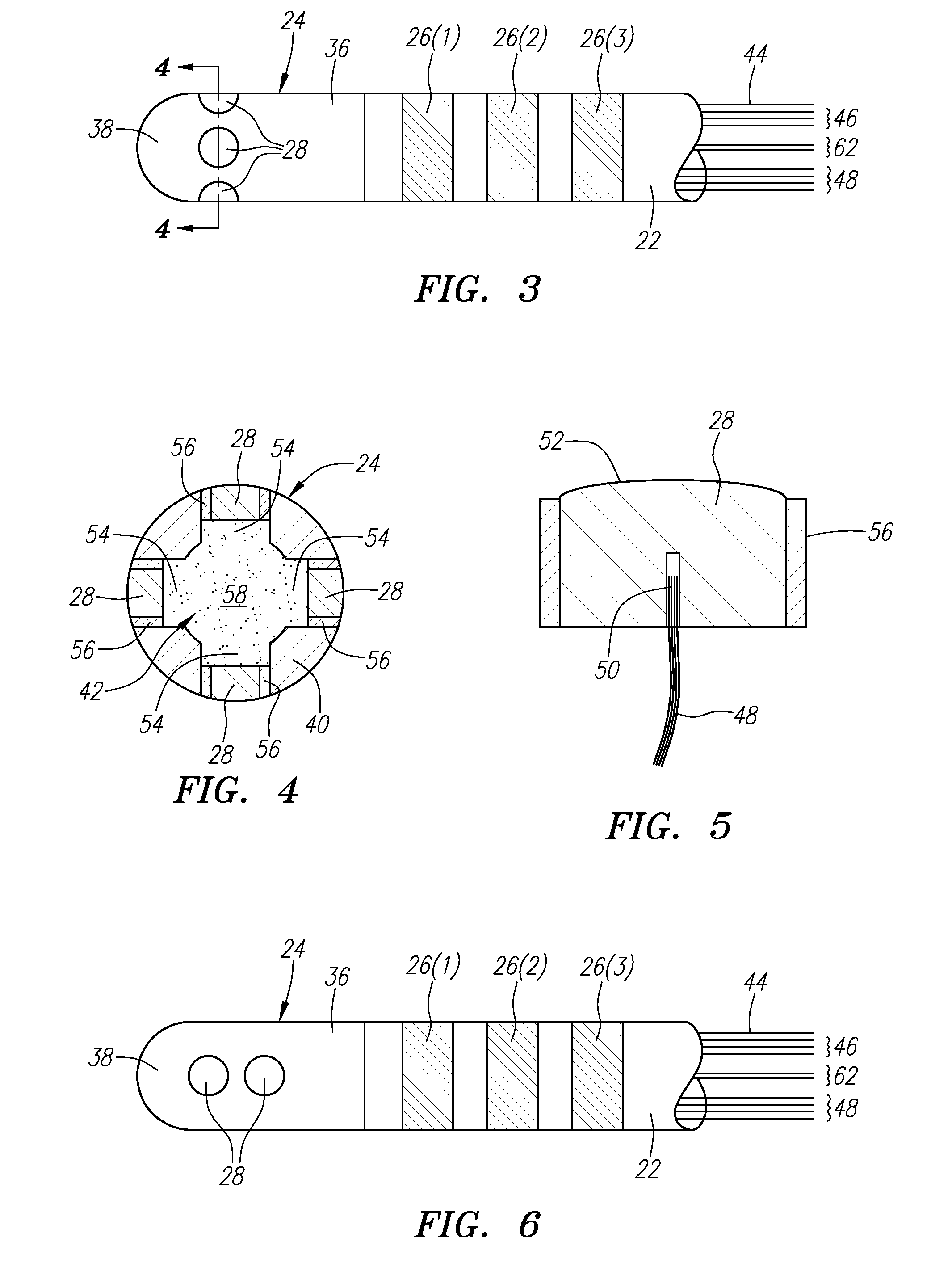High resolution electrophysiology catheter
a high-resolution, electrophysiology technology, applied in the field of high-resolution electrophysiology catheters, can solve the problems of affecting the normal path of depolarization events, disrupting the normal activation of the atria or ventricles, and disrupting the normal propagation of electrical impulses, so as to improve the resolution and fidelity of mapping, and accurately detect tissue contact
- Summary
- Abstract
- Description
- Claims
- Application Information
AI Technical Summary
Benefits of technology
Problems solved by technology
Method used
Image
Examples
Embodiment Construction
[0041]Referring to FIG. 2, an exemplary electrophysiology system 10 constructed in accordance with the present inventions is shown. The system 10 may be used within body lumens, chambers or cavities of a patient for therapeutic and diagnostic purposes in those instances where access to interior bodily regions is obtained through, for example, the vascular system or alimentary canal and without complex invasive surgical procedures. For example, the system 10 has application in the diagnosis and treatment of arrhythmia conditions within the heart. The system 10 also has application in the treatment of ailments of the gastrointestinal tract, prostrate, brain, gall bladder, uterus, and other regions of the body. As an example, the system 10 will be described hereinafter for use in the heart for mapping and ablating arrhythmia substrates.
[0042]The system 10 generally comprises a conventional guide sheath 12, and an electrophysiology catheter 14 that can be guided through a lumen (not sho...
PUM
 Login to View More
Login to View More Abstract
Description
Claims
Application Information
 Login to View More
Login to View More - R&D
- Intellectual Property
- Life Sciences
- Materials
- Tech Scout
- Unparalleled Data Quality
- Higher Quality Content
- 60% Fewer Hallucinations
Browse by: Latest US Patents, China's latest patents, Technical Efficacy Thesaurus, Application Domain, Technology Topic, Popular Technical Reports.
© 2025 PatSnap. All rights reserved.Legal|Privacy policy|Modern Slavery Act Transparency Statement|Sitemap|About US| Contact US: help@patsnap.com



